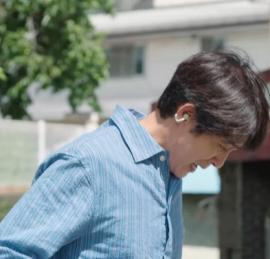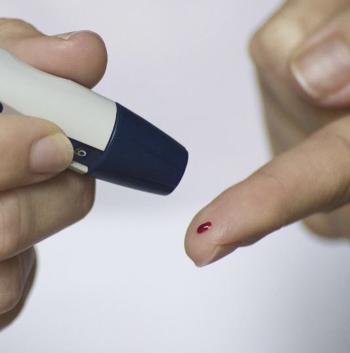Undesignated Children and Youth Hospital 68% of Moonlight...Emphasis on the internalization of the association's pediatric medical policy
Nov 16, 2025
In order to normalize and internalize the pediatric medical system, it has been proposed that Moonlight Children's Hospital should be converted to focus on the main commercialization and function of the pilot project for the regional cooperation system for pediatric care.
The Korea Association of Pediatric Youth Hospital (Chairman Choi Yong-jae, head of Strong Children's Hospital in Uijeongbu) announced the results of a survey of member hospitals related to pediatric medical system policies, including a pilot project for Moonlight Children's Hospital and a regional cooperation system network for pediatric care, at the Dragon City Hotel in Yongsan, the venue of the conference on the 15th.
The association said that in a survey of Moonlight Children's Hospital, 52 member hospitals responded that 17 out of 25 undesignated hospitals answered 'yes' to the question of whether Moonlight Children's Hospital was actually performing functions given to Moonlight Children's Hospital (night treatment, examination, fluid treatment, hospitalization, emergency response, etc.). This means that 68% of the undesignated members of Moonlight Children's Hospital are not Moonlight Children's Hospital and are playing the role.
In addition, even if it is not the standard for Moonlight Children's Hospital, whether you think hospitals that can provide high-level tests, hospitalizations, and emergency responses should be recognized as Moonlight Children's Hospital, which is very high at 52% (27) and 29% (15), which means that the criteria for designating Moonlight Children's Hospital by Children and Youth Hospital should be changed from operating time evaluation to qualitative and functional roles.
In the question of whether the Moonlight Children's Hospital's operating time-centered evaluation system actually puts high-level medical institutions (hospitals that can be tested, hospitalized, and emergency response) at a disadvantage, it was found to be 'yes' 29% (15 places) and 'very yes' 19% (10 places), while 'no' 17% (9 places) and 'not at all' 12% (6 places) showed a big difference.
The Moonlight Children's Hospital System was then very high at 42% (22 places) and 35% (18 places) in response to the question of what should be shifted to hospitals (medical capacity) that can do more than hospitals that open for a long time.
The percentage of children and adolescents who can receive both night treatment, examination, and hospitalization that do not receive moonlight support because they do not meet operating hours standards was also considered institutional reverse discrimination, with 46% (24 places) and 31% (16 places) accounting for 77%.
In the question of whether the current Moonlight Children's Hospital is sufficiently compensating for standby costs, 56% (29 places) and 33% (17 places) wanted improvement.
In particular, the majority of the people agreed with the reorganization plan divided into Moonlight Children's Hospital Type 1 clinic type (mild outpatient, rapid power, basic fee) and Type 2 hospital type (test, hospitalization, emergency response, Standby Cost, and specialist addition). 'I very much agree'50% (26 places) and 'I agree'31% (16 places).
In a survey on the pilot project of the pediatric medical care cooperation system network, 78% of the respondents said this policy is helpful in securing golden time for patients with moderate or higher levels. 'Very yes' 38% (20 places) and 'Yes' 40% (21 places).
However, the case of delay in the process from the pediatric and adolescent hospital to the entire hospital after treatment was pointed out as a problem. When asked how much delay they experienced in the past year, there were 19% (10 places), 42% (22 places), and 27% (14 places) of 'experience'very frequent'.
In addition, for the pilot project of the pediatric regional cooperation system network to work properly, what policy measures are most necessary (39 places, 75%), the establishment of forwarding and linking numbers in the medical cooperation network (35, 67%), the computerization of the power system and the establishment of a transfer control tower in the region (28, 54%), the establishment of a standard manual for power and transportation by region (25 places, 48%), the establishment of an appropriate fee and support for all hospitals (20 places, 38%), the establishment of an information sharing system between hospitals for moonlight and pilot projects (14 places, 27%), the deployment of administrative personnel dedicated to the local pediatric emergency (9 places.
There was also a strong position that the infrastructure of the pediatric and adolescent hospital should be actively utilized during the hiatus of the personnel specializing in the small and medium-sized department. Of the total respondents, 69% were 'very much so' and 19% were 'yes'.
The main reason for not participating in the Moonlight Children's Hospital or the Children's Medical Cooperation System Network pilot project was the lack of manpower, that is, the difficulty of securing manpower at night and on holidays (22 places, 42%). Other reasons were insufficient (operating cost, standby cost not covered) (13 places, 25 percent), already under night and holiday treatment, but did not meet the 「Moonlight Standard」 (9 places, 17 percent), unreasonable designation criteria (operating time-centered evaluation, 6 places, 12 percent), complicated administrative procedures (3 places, 6 percent), disallowed administrative agencies (1 place, 2 percent), prohibited local governments from approving additional Moonlight hospitals (1 place, 2 percent), and the pressure to receive applications regardless of the number of waiting people when visiting patients within operating hours of Moonlight Children's Hospital (1 place, 2 percent).
Accordingly, the Korea Children's Hospital Association should reorganize the Dalbit Children's Hospital based on what can be done at that time, not just on how long does it open until now"It should be reorganized into a function-based moonlight (type 1 and type 2) structure based on the premise of institutionalization of the medical cooperation network."I suggested again.
The association said, "Now, rather than the number of night care institutions, the key is what 'the institution can do'". "The main business of the medical cooperation network should be made so that clinics, hospitals, and local hospitals can link time-dependent diseases without delay."," he stressed.
In addition, the association reiterated that above all, a 'function-oriented Moonlight Children's Hospital' system should be established. Moonlight Children's Hospital should be divided into Type 1 (clinical) and Type 2 (hospital type) and the compensation structure should be different according to the treatment function.
According to the results of the survey on the internalization of the pediatric medical system, the association suggested that the standard cost and direct treatment by pediatricians should be reflected as Type 1 is a hospital-type model that can be tested, hospitalized, and emergency response.
Subsequently, it was suggested that pediatric and adolescent hospitals that can actually perform night tests, hospitalizations, fluid treatment, and emergency responses should be incorporated into the system as 'conditional type 2 functional certification' as they play a role outside the system based on operating hours.
Chairman Choi Yong-jae said, `One pediatric and adolescent hospital has continued to provide high-level pediatric care, but due to the evaluation centered on operating hours, the hospital was excluded from the designation of Moonlight Children's Hospital, forcing the hospital to reduce emergency and inpatient care," he said, introducing the case.
Chairman Choi said, `A hospital in the Seoul metropolitan area is suffering losses because the standby cost is not preserved even though both tests and hospitalization are possible" he vented.
He pointed out that "some secondary hospitals are receiving compensation even in the absence of a medical specialist at all times, while selecting emergency medical fees and Moonlight Children's Hospital treatment additionally based on the performance of the non-audit department." The association pointed out that "institutions without specialized pediatric care functions are compensated, and hospitals in charge of actual nightly pediatric care are reversely discriminated against."
Chairman Choi Yong-jae emphasized that `Children's and Youth Hospital is much more realistic and efficient than building a new infrastructure in that it can expand its capacity immediately because it already has manpower and equipment,' adding, `Since delays in all time-dependent diseases such as cramps, intussusception, acute myocarditis, and pneumonia have fatal consequences, securing golden time is not an additional expenditure, but an investment in reducing social costs.'
Vice Chairman Lee Hong-joon (Director of Gimpo Ai First Hospital), who was present on the same day, said, `We should also distinguish between the policy directions of the metropolitan area and the non-metropolitan area," he stressed.
Vice Chairman Lee Hong-jun said, "(As the metropolitan area already has sufficient infrastructure, 'Quality-centered transformation' is needed, and the non-metropolitan area still lacks a basic night care network, so 'quantitative expansion' and 'cultivation of strong hospitals' should be carried out in parallel." he said.
Vice Chairman Lee said, `Currently, Moonlight Children's Hospital designated institutions in the Seoul metropolitan area account for more than 70% of the country, but some areas, such as Gyeongbuk and Gangwon, do not have institutions within a 20-30km radius that can provide treatment for children at night"The association's judgment is that it is efficient to improve the quality of the metropolitan area and expand the foundation for the provinces."
The Korea Association of Pediatric Youth Hospital (Chairman Choi Yong-jae, head of Strong Children's Hospital in Uijeongbu) announced the results of a survey of member hospitals related to pediatric medical system policies, including a pilot project for Moonlight Children's Hospital and a regional cooperation system network for pediatric care, at the Dragon City Hotel in Yongsan, the venue of the conference on the 15th.
The association said that in a survey of Moonlight Children's Hospital, 52 member hospitals responded that 17 out of 25 undesignated hospitals answered 'yes' to the question of whether Moonlight Children's Hospital was actually performing functions given to Moonlight Children's Hospital (night treatment, examination, fluid treatment, hospitalization, emergency response, etc.). This means that 68% of the undesignated members of Moonlight Children's Hospital are not Moonlight Children's Hospital and are playing the role.
In addition, even if it is not the standard for Moonlight Children's Hospital, whether you think hospitals that can provide high-level tests, hospitalizations, and emergency responses should be recognized as Moonlight Children's Hospital, which is very high at 52% (27) and 29% (15), which means that the criteria for designating Moonlight Children's Hospital by Children and Youth Hospital should be changed from operating time evaluation to qualitative and functional roles.
In the question of whether the Moonlight Children's Hospital's operating time-centered evaluation system actually puts high-level medical institutions (hospitals that can be tested, hospitalized, and emergency response) at a disadvantage, it was found to be 'yes' 29% (15 places) and 'very yes' 19% (10 places), while 'no' 17% (9 places) and 'not at all' 12% (6 places) showed a big difference.
The Moonlight Children's Hospital System was then very high at 42% (22 places) and 35% (18 places) in response to the question of what should be shifted to hospitals (medical capacity) that can do more than hospitals that open for a long time.
The percentage of children and adolescents who can receive both night treatment, examination, and hospitalization that do not receive moonlight support because they do not meet operating hours standards was also considered institutional reverse discrimination, with 46% (24 places) and 31% (16 places) accounting for 77%.
In the question of whether the current Moonlight Children's Hospital is sufficiently compensating for standby costs, 56% (29 places) and 33% (17 places) wanted improvement.
In particular, the majority of the people agreed with the reorganization plan divided into Moonlight Children's Hospital Type 1 clinic type (mild outpatient, rapid power, basic fee) and Type 2 hospital type (test, hospitalization, emergency response, Standby Cost, and specialist addition). 'I very much agree'50% (26 places) and 'I agree'31% (16 places).
In a survey on the pilot project of the pediatric medical care cooperation system network, 78% of the respondents said this policy is helpful in securing golden time for patients with moderate or higher levels. 'Very yes' 38% (20 places) and 'Yes' 40% (21 places).
However, the case of delay in the process from the pediatric and adolescent hospital to the entire hospital after treatment was pointed out as a problem. When asked how much delay they experienced in the past year, there were 19% (10 places), 42% (22 places), and 27% (14 places) of 'experience'very frequent'.
In addition, for the pilot project of the pediatric regional cooperation system network to work properly, what policy measures are most necessary (39 places, 75%), the establishment of forwarding and linking numbers in the medical cooperation network (35, 67%), the computerization of the power system and the establishment of a transfer control tower in the region (28, 54%), the establishment of a standard manual for power and transportation by region (25 places, 48%), the establishment of an appropriate fee and support for all hospitals (20 places, 38%), the establishment of an information sharing system between hospitals for moonlight and pilot projects (14 places, 27%), the deployment of administrative personnel dedicated to the local pediatric emergency (9 places.
There was also a strong position that the infrastructure of the pediatric and adolescent hospital should be actively utilized during the hiatus of the personnel specializing in the small and medium-sized department. Of the total respondents, 69% were 'very much so' and 19% were 'yes'.
The main reason for not participating in the Moonlight Children's Hospital or the Children's Medical Cooperation System Network pilot project was the lack of manpower, that is, the difficulty of securing manpower at night and on holidays (22 places, 42%). Other reasons were insufficient (operating cost, standby cost not covered) (13 places, 25 percent), already under night and holiday treatment, but did not meet the 「Moonlight Standard」 (9 places, 17 percent), unreasonable designation criteria (operating time-centered evaluation, 6 places, 12 percent), complicated administrative procedures (3 places, 6 percent), disallowed administrative agencies (1 place, 2 percent), prohibited local governments from approving additional Moonlight hospitals (1 place, 2 percent), and the pressure to receive applications regardless of the number of waiting people when visiting patients within operating hours of Moonlight Children's Hospital (1 place, 2 percent).
Accordingly, the Korea Children's Hospital Association should reorganize the Dalbit Children's Hospital based on what can be done at that time, not just on how long does it open until now"It should be reorganized into a function-based moonlight (type 1 and type 2) structure based on the premise of institutionalization of the medical cooperation network."I suggested again.
The association said, "Now, rather than the number of night care institutions, the key is what 'the institution can do'". "The main business of the medical cooperation network should be made so that clinics, hospitals, and local hospitals can link time-dependent diseases without delay."," he stressed.
In addition, the association reiterated that above all, a 'function-oriented Moonlight Children's Hospital' system should be established. Moonlight Children's Hospital should be divided into Type 1 (clinical) and Type 2 (hospital type) and the compensation structure should be different according to the treatment function.
According to the results of the survey on the internalization of the pediatric medical system, the association suggested that the standard cost and direct treatment by pediatricians should be reflected as Type 1 is a hospital-type model that can be tested, hospitalized, and emergency response.
Subsequently, it was suggested that pediatric and adolescent hospitals that can actually perform night tests, hospitalizations, fluid treatment, and emergency responses should be incorporated into the system as 'conditional type 2 functional certification' as they play a role outside the system based on operating hours.
Chairman Choi Yong-jae said, `One pediatric and adolescent hospital has continued to provide high-level pediatric care, but due to the evaluation centered on operating hours, the hospital was excluded from the designation of Moonlight Children's Hospital, forcing the hospital to reduce emergency and inpatient care," he said, introducing the case.
Chairman Choi said, `A hospital in the Seoul metropolitan area is suffering losses because the standby cost is not preserved even though both tests and hospitalization are possible" he vented.
He pointed out that "some secondary hospitals are receiving compensation even in the absence of a medical specialist at all times, while selecting emergency medical fees and Moonlight Children's Hospital treatment additionally based on the performance of the non-audit department." The association pointed out that "institutions without specialized pediatric care functions are compensated, and hospitals in charge of actual nightly pediatric care are reversely discriminated against."
Chairman Choi Yong-jae emphasized that `Children's and Youth Hospital is much more realistic and efficient than building a new infrastructure in that it can expand its capacity immediately because it already has manpower and equipment,' adding, `Since delays in all time-dependent diseases such as cramps, intussusception, acute myocarditis, and pneumonia have fatal consequences, securing golden time is not an additional expenditure, but an investment in reducing social costs.'
Vice Chairman Lee Hong-joon (Director of Gimpo Ai First Hospital), who was present on the same day, said, `We should also distinguish between the policy directions of the metropolitan area and the non-metropolitan area," he stressed.
Vice Chairman Lee Hong-jun said, "(As the metropolitan area already has sufficient infrastructure, 'Quality-centered transformation' is needed, and the non-metropolitan area still lacks a basic night care network, so 'quantitative expansion' and 'cultivation of strong hospitals' should be carried out in parallel." he said.
Vice Chairman Lee said, `Currently, Moonlight Children's Hospital designated institutions in the Seoul metropolitan area account for more than 70% of the country, but some areas, such as Gyeongbuk and Gangwon, do not have institutions within a 20-30km radius that can provide treatment for children at night"The association's judgment is that it is efficient to improve the quality of the metropolitan area and expand the foundation for the provinces."
|
This article was translated by Naver AI translator.














